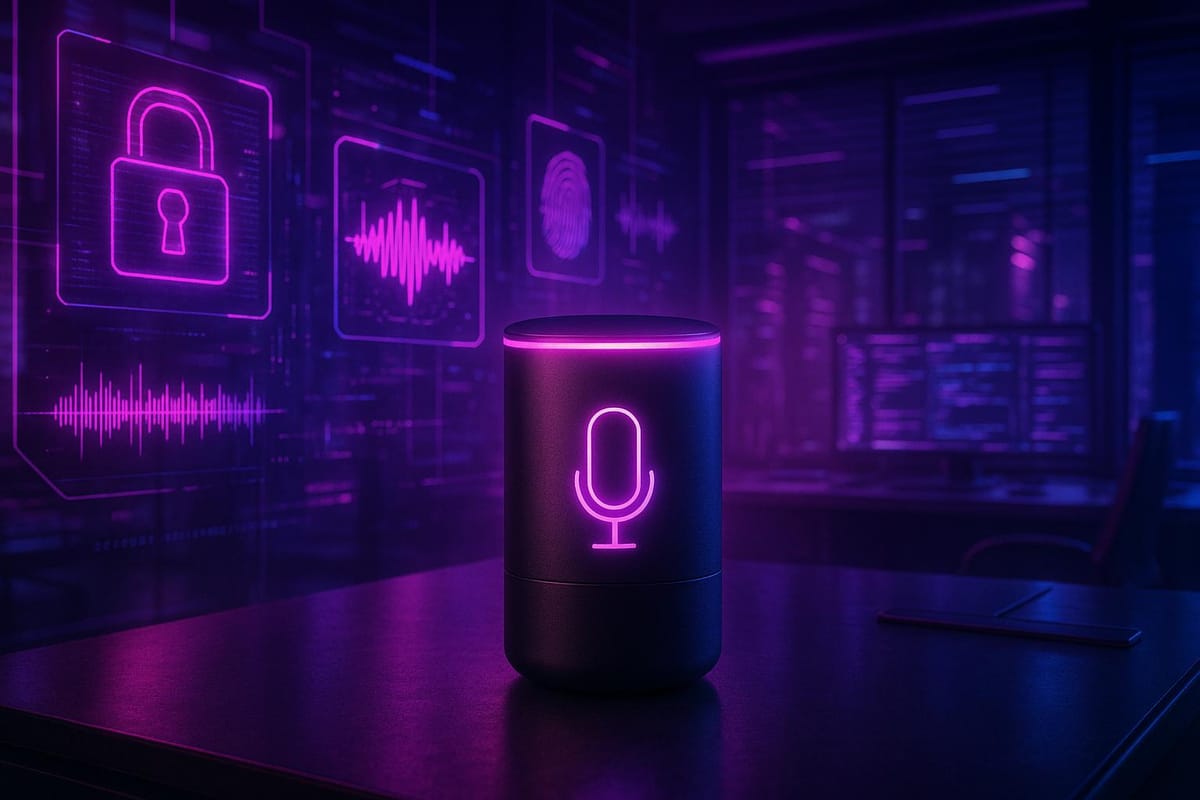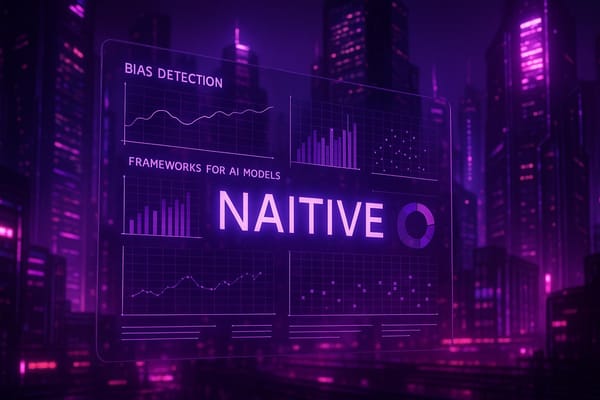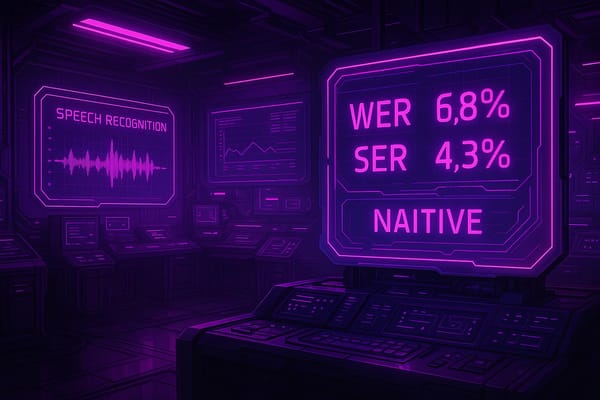Voice AI Privacy Laws: What Businesses Need To Know
Understand the vital privacy laws governing voice AI, including GDPR and CCPA, to ensure compliance and protect consumer trust.

Voice AI is transforming industries, but it comes with strict privacy rules. Here's what you need to know to stay compliant and protect consumer trust:
- Key Privacy Laws: Regulations like GDPR, CCPA, and state biometric laws (e.g., Illinois BIPA) govern how voice data is collected, used, and stored. These laws require explicit consent, data minimization, and robust security measures.
- Consent Rules: GDPR mandates opt-in consent, while CCPA allows opt-out options. Businesses must clearly inform users about data collection and usage.
- Data Security: Encryption, access controls, and regular audits are essential to safeguard sensitive voice data.
- Retention Limits: Store data only as long as necessary and set automated deletion policies to comply with laws like GDPR and BIPA.
- Emerging Regulations: New laws, such as Illinois' Digital Voice and Likeness Protection Act, target voice cloning and synthetic voice misuse.
Quick Tip: Conduct privacy assessments, strengthen security, and document processes to ensure compliance. Staying ahead of evolving regulations is critical for building trust and avoiding fines.
Webinar - AI and Privacy Collide
Major Privacy Laws for Voice AI
Navigating the privacy regulations surrounding voice AI can feel like threading a needle. Various laws dictate how businesses should handle voice data and biometric information, making it essential to stay informed. Let’s break down some of the key regulations shaping this space.
GDPR Requirements
The General Data Protection Regulation (GDPR) treats voice data as personal information, meaning it’s subject to strict rules. Here’s what businesses need to keep in mind:
- Explicit Consent: You must get clear, informed permission before recording or processing any voice data.
- Data Minimization: Only collect the voice data that’s absolutely necessary for your purpose.
- Right to Erasure: Users can request that their voice recordings be deleted.
- Data Protection: Use safeguards like encryption and secure storage to keep voice data safe.
These provisions aim to ensure that personal voice data is handled with care and respect.
CCPA Guidelines
The California Consumer Privacy Act (CCPA) offers protections for voice data collected from California residents. Businesses working with voice data need to comply with these key requirements:
- Transparency: Inform consumers about how and why you’re collecting their voice data.
- Opt-Out Options: Allow users to opt out of voice data collection.
- Usage Disclosure: Clearly explain how the recordings will be used.
- Data Access: Provide consumers access to their voice data upon request.
These rules empower California residents to take control of their voice data and make informed decisions about its use.
State Biometric Laws
Some states have gone a step further by enacting laws specifically targeting biometric data, which includes voiceprints. Here are a couple of examples:
| State | Key Requirements |
|---|---|
| Illinois (BIPA) | Written consent is mandatory for collecting biometric data, plus a private right of action. |
| Texas | Requires informed consent and clear disclosure before collecting biometric data. |
These state-level laws highlight the importance of obtaining user consent and often give individuals the ability to seek legal recourse if their rights are violated. For businesses, this means designing voice AI systems that meet - or exceed - the strictest applicable standards.
Data Collection and Consent Rules
Voice AI systems must adhere to strict data collection and consent practices to ensure compliance with regulations and maintain user trust.
Getting User Permission
When it comes to user consent, GDPR and CCPA have different requirements. GDPR insists on explicit opt-in consent for voice data, while CCPA allows default data collection as long as users are given a clear opt-out option.
Here’s a breakdown of the consent elements for both regulations:
| Consent Element | GDPR Requirement | CCPA Requirement |
|---|---|---|
| Timing | Consent must be obtained before data collection starts | Notice must be provided at or before data collection |
| Format | Requires an explicit opt-in process | Requires clear notice with an opt-out option |
| Documentation | Keep written records of user consent | Maintain records of notices and opt-outs |
| User Control | Users can withdraw consent at any time | Users can opt out at any time |
Once consent is secured, businesses should focus on limiting the amount of data they collect to minimize risks.
Limiting Data Collection
Collecting the bare minimum of data is a guiding principle in privacy regulations. Voice AI systems should be designed to capture only what is absolutely necessary for functionality.
Technical Controls
- Use "wake word" detection to ensure the system only records when activated.
- Configure the system to capture specific, relevant parts of conversations rather than entire sessions.
- Provide visual or audio cues to inform users when recording is active.
Process Controls
- Conduct regular audits to evaluate data collection practices.
- Automate the deletion of recordings that are no longer needed.
- Restrict access to voice data, ensuring only authorized personnel can handle it.
Industries like healthcare and finance often require stricter safeguards due to the sensitive nature of their data. These sectors may adopt a layered consent approach, starting with an initial disclosure and followed by periodic reminders to keep users informed throughout their interactions with voice AI.
For businesses navigating these complexities, agencies like NAITIVE AI Consulting Agency offer valuable support. They can help design compliant voice AI systems by conducting privacy impact assessments, crafting consent workflows, and recommending technical safeguards tailored to industry needs.
Data Security and Storage Rules
Voice AI systems demand robust security measures to safeguard sensitive voice data and ensure compliance with privacy laws. Companies must not only protect this data but also follow strict rules regarding how long it can be stored.
Required Security Measures
Protecting voice data requires a multi-layered approach to security, covering both stored recordings and data in transit. Here’s a breakdown of key requirements under GDPR and CCPA:
| Security Component | GDPR Requirement | CCPA Requirement |
|---|---|---|
| Encryption | End-to-end encryption for storage and transit | "Reasonable" encryption measures required |
| Access Controls | Strict authentication and authorization | Limited access to authorized personnel |
| Monitoring | Continuous logging and regular audits | Routine security assessments |
| Data Protection | Pseudonymization of personal identifiers | Protection against unauthorized access |
These foundational measures should be supported by technical implementations, including:
- Industry-standard encryption for secure storage of voice data.
- Secure key management with regular key rotation.
- Access logging and monitoring to track data usage.
- Regular penetration tests to identify vulnerabilities.
"The FTC has imposed significant fines and negative publicity on companies that fail to protect consumer data or mislead users about data practices".
For businesses operating across multiple jurisdictions, aligning with the most stringent standards - such as GDPR - often ensures compliance across the board, even for U.S.-based operations.
Storage Time Limits
Once voice data is secured, companies must also comply with strict rules on how long it can be stored. Regulations like GDPR and CCPA emphasize limiting retention to what’s necessary for the data’s intended purpose.
Key Storage Requirements:
- Initial Storage Period: Retain data only as long as it’s needed to fulfill the stated business purpose.
- Deletion Triggers: Remove data when the purpose is fulfilled, a user requests deletion, or the retention period expires.
- Documentation: Maintain clear records, including:
- Data retention schedules
- Deletion procedures
- Records of user deletion requests
State-specific laws, such as the Illinois Biometric Information Privacy Act (BIPA), add further requirements. For instance, BIPA mandates that businesses establish clear retention schedules and destruction policies for voice data.
Best Practices for Compliance:
- Clearly document retention periods in privacy policies.
- Use automated systems to delete data once it’s no longer needed.
- Maintain detailed audit trails of data deletion activities.
- Regularly review and update retention schedules to stay aligned with regulations.
For companies needing guidance, NAITIVE AI Consulting Agency offers services like privacy impact assessments and custom retention policy development to help businesses navigate these requirements while maintaining operational effectiveness.
New Privacy Laws and Changes
New AI Laws
Regulations surrounding voice AI are rapidly shifting, particularly when it comes to voice cloning and synthetic voices. To stay compliant, businesses need to:
- Thoroughly document their system architecture and data flows.
- Conduct regular risk assessments and compliance audits while implementing clear consent processes.
- Adapt internal procedures to align with evolving legal standards.
One example of this regulatory shift is Illinois' proactive stance on voice cloning, outlined below.
Voice Clone Protection
Illinois has introduced the Digital Voice and Likeness Protection Act, targeting unauthorized replication of synthetic voices. This legislation prioritizes explicit consent and transparency in the use of AI-generated voices.
NAITIVE AI Consulting Agency suggests the following steps to ensure compliance:
-
Documentation Updates
Keep separate records for consent related to AI-generated voices, distinct from general voice data permissions. -
System Assessment
Monitor how voice data is used and identify any security gaps or risks. -
Policy Management
Refine internal policies to meet synthetic voice regulations by:- Conducting regular policy reviews.
- Performing periodic audits to focus on voice cloning protections.
- Updating consent procedures specifically for AI voice generation.
Next Steps for Businesses
To stay ahead with voice AI advancements while maintaining compliance, businesses should embrace a privacy-first mindset. Here's how you can get started:
Immediate Actions to Take
-
Conduct a Privacy Assessment
Review your current voice AI setups by mapping out data flows, storage methods, and consent processes. Pinpoint any compliance issues and areas needing improvement. -
Strengthen Security Measures
Ensure robust protection by implementing:- End-to-end encryption
- Secure cloud storage with restricted access
- Automated data retention schedules
- Routine security audits
-
Create Written Protocols
Clearly document your processes to align with privacy standards. Here's a breakdown:Process Area Required Actions Data Collection Specify what voice data is needed and set up clear consent mechanisms. Storage Define retention timelines and establish deletion policies. Processing Outline data usage purposes and assign access permissions. Security Introduce encryption and schedule regular audits.
By embedding these practices into your systems, you can ensure both compliance and smooth operations.
Integration Strategy
For a seamless voice AI rollout that prioritizes privacy:
- Work with seasoned AI consultants to guide implementation.
- Sync voice AI technologies with your existing systems for smoother integration.
- Set up continuous monitoring to adapt to changing regulations.
- Train your team thoroughly on new tools and protocols.
- Keep detailed records of all procedures to demonstrate compliance.
For ongoing success, consider using AI as a Managed Service. This ensures your voice AI solutions stay efficient and compliant as the regulatory landscape evolves. Continuous monitoring and optimization will keep your systems up-to-date and effective.
FAQs
What steps can businesses take to comply with GDPR and CCPA when using voice AI technology?
To meet GDPR and CCPA requirements when using voice AI, businesses need to prioritize privacy and data protection by following these essential practices:
- Transparency: Make it clear to users what voice data you’re collecting, how it will be used, and who it might be shared with. This should be outlined in an easy-to-read privacy policy.
- Consent: Secure explicit consent from users before collecting or processing their voice data. Under GDPR, this means consent must be freely given, specific, and well-informed.
- Data Minimization: Only collect the voice data you absolutely need for the intended purpose. Avoid storing or processing anything unnecessary.
- User Rights: Empower users to exercise their rights, such as accessing their data, requesting its deletion, or opting out of its sale - an important requirement under CCPA.
- Data Security: Protect voice data with strong security measures to prevent breaches or unauthorized access, as mandated by both GDPR and CCPA.
For businesses looking to integrate voice AI while staying compliant, consulting with experts like NAITIVE AI Consulting Agency can provide the guidance needed to navigate these regulations and ensure legal compliance.
What security measures should businesses take to protect voice data and comply with privacy laws like GDPR and CCPA?
To protect voice data and comply with privacy regulations like GDPR and CCPA, businesses need to prioritize strong security practices. Here are a few key steps:
- Encrypt data: Use encryption to secure voice data both while it's being transmitted and when it's stored, minimizing the risk of unauthorized access.
- Control access: Implement role-based permissions and require multi-factor authentication to ensure only authorized personnel can access sensitive voice data.
- Anonymize recordings: Whenever possible, remove or obscure personally identifiable information (PII) from voice recordings to enhance privacy.
- Conduct audits: Perform regular security audits to identify potential vulnerabilities and confirm compliance with privacy standards.
These measures not only help prevent data breaches but also show a clear commitment to safeguarding users' personal information.
What steps can businesses take to comply with new regulations on voice cloning and synthetic voice misuse?
To get ready for new regulations surrounding voice cloning and synthetic voice misuse, businesses should take active steps to ensure compliance and safeguard user privacy. Start by reviewing your current voice AI systems to pinpoint any risks tied to how data is collected, stored, or used. Strengthen your data security by using tools like encryption and anonymization to protect sensitive information.
Keep up-to-date with privacy laws such as GDPR, CCPA, and any upcoming rules aimed at synthetic voice technologies. Regularly revise your compliance policies and provide employee training to ensure everyone understands the legal and ethical responsibilities tied to voice AI usage.
For added support, think about consulting professionals in AI and privacy compliance. Agencies like NAITIVE AI Consulting Agency can help you align your AI solutions with legal standards while minimizing risks to your business.




